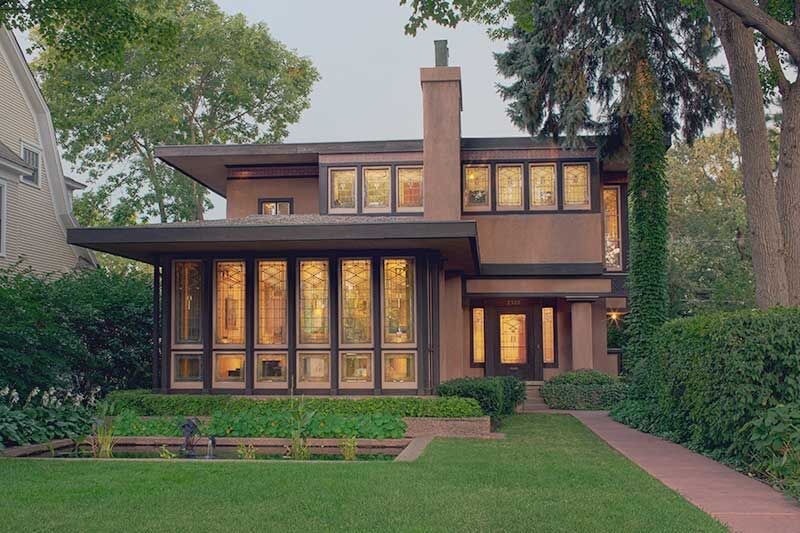Architecture 101 - Everything You Need To Know About Prairie Style Exteriors
I have to admit, I have a bit of an obsession with Prairie-style architecture. Inspired by nature, this classic style is truly unique in that it still feels cozy and inviting despite the clean lines, minimal ornamentation, and structural feel.
But have you ever wondered what truly makes a home, a Prairie home? What are the common characteristics? What colours and materials should be used? And how could a boring, outdated house be updated to not only embrace the timelessness of the Prairie style?
History of Prairie Style Architecture
Known as the first American architectural style, Prairie-style architecture first emerged in Chicago around 1900. It’s creator, Frank Lloyd Wright, along with a team of young architects, were tired of the traditional European styles that were popular at the time, and wanted to create something unique and fresh that was better suited for modern American lifestyle.
This group of architects were heavily inspired by the Arts & Crafts movement, as well as the work of architect Louis Sullivan, who believed that American architecture should be rooted in nature. As a result, Prairie-style architecture was heavily inspired by the surrounding mid-western landscape. Homes typically spread out across the lot and featured flat or shallow hipped rooflines, rows of windows, wide eaves, and bands of materials such as brick, stone, or wood.
Since Frank Lloyd Wright also believed that a home should be designed to serve the needs of its residents, he focused more on creating functional designs as opposed to ornamental and elaborate details.
Common Characteristics of a Prairie Exterior
A typical Prairie home would incorporate many of the elements listed below:
A strong sense of horizontal line, created through flat or shallow rooflines and bands of materials.
Wide overhanging eaves.
Expansive rows of windows.
Simple detailing, homes should be functional rather than ornamental.
Homes should be predominately clad in natural materials such as wood, brick, or stone.
A Few Examples of Prairie-style Homes
This is a beautiful example of a Prairie home. True to the Prairie-style, this home has a very low, yet expansive, profile. A shallow roofline covers the entire home, while wide overhanging eaves enclose the veranda. Most of the available wall space appears to have been utilized for windows, while natural materials such as brick and wood are predominately used as the main cladding materials.
Designed by Frank Lloyd Wright himself, the Robie House is a perfect example of Prairie-style architecture. Despite having multiple floors, this home still appears very low to the ground due to the long, shallow roofline and expansive bands of windows, which appear to cover the entire main and second floor wall.
The sense of horizontal line is further established through the incorporation of a long brick wall, which encircles the entire home.
I mean really, the long brick wall is actually a fence, but the thoughtful incorporation of the wall makes it appear to be an integral part of the house as opposed to a wood screen designed to keep others out.
A Few Homes That Could Easily Be Converted to a Prairie Style Home
Below are two average homes in Edmonton…
Before
The simple shape and low profile of this home would make it the perfect candidate for a Prairie-style update.
In order to really create that Prairie feel, the existing windows could be replaced with two wide rows of windows. The exterior finish materials could also be replaced with a combination of traditional brick and wide lap siding. Finally, the roof could be replaced with a low sloped hip roof with wide overhangs.
A covered porch could also be used to create that strong horizontal line and would also add interest to the otherwise simple elevation.
After
Before
Again, the simple shape of this home as well as the low roof line and wide eaves make it another great candidate for a Prairie style make over.
Just like the last example, changing out the existing windows for ones that stretch out a bit wider across the wall would immediately freshen up the home. The stucco could also be replaced with a material, or materials, more suited to the Prairie-style.
After
Want to learn more about residential architecture? Check out the rest of the series:
BY EMILY RADKIE









